Flying over long distances can be very uncomfortable. You can’t move your legs sufficiently; your legs and ankles may swell after flying. In fact, this problem is common among long distance fliers. But it can also be a symptom of serious medical conditions in some cases. Seek medical help if you are concerned. Fortunately, you can take some measures to manage and prevent this problem.
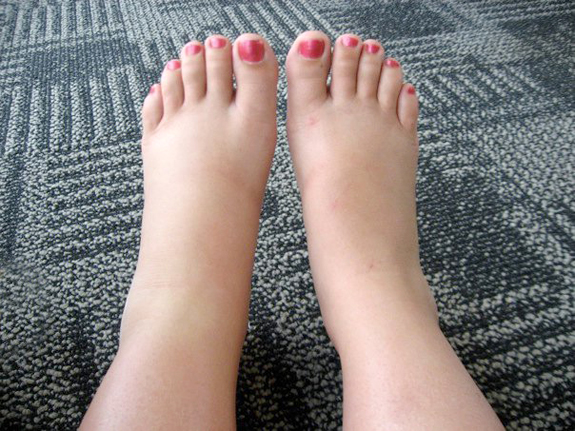
What Causes Swollen Ankles After Flying?
Swelling in the feet is a result of accumulation of fluid within the body. Because of the restricted movement, blood flow within the legs slows down so that it neither gets to or from these limbs at the normal pace. This leads to body fluid accumulating within the lower limbs, which causes the swollen ankles.
People who are overweight and menstruating women are at a higher risk of suffering swollen ankles. In addition, women who are having their periods may suffer from blood clots, a serious condition. Individuals who exercise regularly are at minimal risk of leg or ankle swelling after flying. They are also unlikely to get life-threatening blood clots.
When to See the Doctor
If you experience short breath or chest pain besides swollen ankles after flight, you need to seek immediate medical care. Similarly, if your swelling persists for hours after getting back to your normal routine, it may be a symptom of a serious medical condition – deep vein thrombosis (blood clot in the leg). This is more likely if the swelling only affects one leg and is accompanied by pain. Should you experience such symptoms, seek medical attention immediately.
If you take birth control pills or recently had major surgery, you may have a higher risk of getting blood clots. For this reason you need to consult your doctor ahead of your flight. The doctor may advise you to wear compression socks during the flight, or prescribe blood thinning medications.
How to Relieve Swollen Ankles After Flying
1. Apply Ice
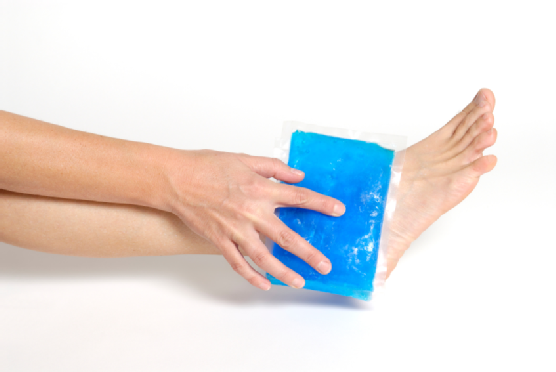 Ice is a handy home remedy for swollen ankles. It works by constricting blood vessels, which shrinks the swelling.
Ice is a handy home remedy for swollen ankles. It works by constricting blood vessels, which shrinks the swelling.
- Put several ice cubes in a sheet of cloth and apply this to the swollen ankles.
- Leave it on for 10-15 minutes.
- You can also give your swollen ankle a cold bath by putting some ice cubes in a tub.
- Dip your swollen foot and keep it in for 1-2 minutes at a time.
- Repeat several times.
2. Elevate Your Feet
 At the first sign of swelling, elevate your feet so that they are at the level with or above your heart. You can do this by supporting them with a foot pillow as you lie down or placing the feet on a platform such as a stool when you sit. Keep your feet elevated for 20-30 minutes at a time and repeat three times per day.
At the first sign of swelling, elevate your feet so that they are at the level with or above your heart. You can do this by supporting them with a foot pillow as you lie down or placing the feet on a platform such as a stool when you sit. Keep your feet elevated for 20-30 minutes at a time and repeat three times per day.
3. Keep Your Feet Moving
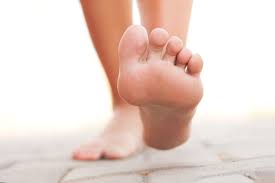 When you have swollen ankles after flying, movement of your legs will improve circulation and reduce the swelling.
When you have swollen ankles after flying, movement of your legs will improve circulation and reduce the swelling.
- For every 1-2 hours of sitting, take a 10-minute walk.
- If you spend most of your time seated, take a 15-minute walk 3-4 times per day to maintain healthy circulation in your legs.
4. Give Your Feet a Warm Soak
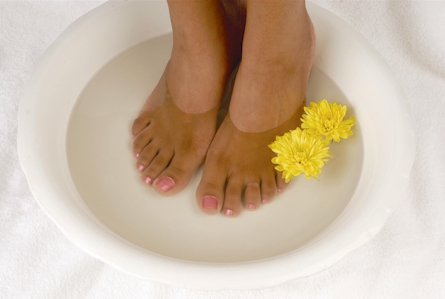 Most of the times you don’t require any treatment except a good rest and a warm soak to relax your feet and ankles.
Most of the times you don’t require any treatment except a good rest and a warm soak to relax your feet and ankles.
- Put warm water in a tub.
- Put your feet into the tub and soak them for 15-30 minutes.
5. Give Your Feet and Ankles a Massage
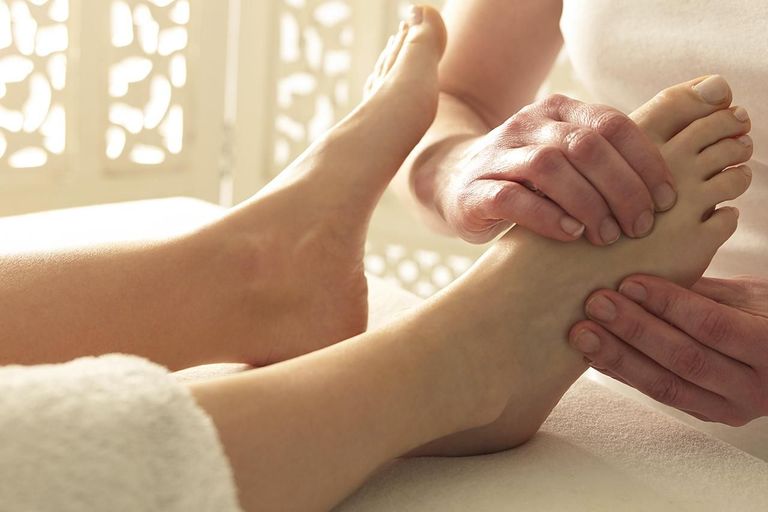 Massaging your feet and swollen ankles relieves the pain and swelling. You can do it yourself or have someone help you. The massage should be done gently in the direction of the heart.
Massaging your feet and swollen ankles relieves the pain and swelling. You can do it yourself or have someone help you. The massage should be done gently in the direction of the heart.
- Start by massaging the toe muscles.
- Follow this up by massaging the foot bottom.
- Continue by massaging the legs towards the knees.
- Use some oil if your feet and legs are dry.
6. Give Your Feet an Epsom Salt Bath
 An Epsom salt bath reduces the pain and relaxes your ankles and feet. It also soothes sore muscles, reduces the swelling by draining the excess fluid, and improves blood circulation.
An Epsom salt bath reduces the pain and relaxes your ankles and feet. It also soothes sore muscles, reduces the swelling by draining the excess fluid, and improves blood circulation.
- Put a handful of Epsom salt into a tub of warm or hot water.
- Put your feet and lower leg into the tub and soak 15-30 minutes.
How to Prevent Swollen Ankles During Flight
When flying over a long distance, you need to maintain healthy flow of blood. Here are ten ways of achieving this so that you don’t suffer from swollen ankles after flying:
- Take regular walks. Get on your feet and take a walk several times during your flight. This will improve circulation and reduce the risk of swelling or pain in your ankles.
- Drink lots of water. Take a lot of water the day before traveling and during the flight. This way, your body will be well hydrated. The water will also force you to walk to the bathroom several times during the flight.
- Use the overhead storage. Move your carry-on luggage from the leg space to give your legs more space to move about.
- Reduce your salt intake. Eat as little salt as you can the day before flying. Salt can cause your body to retain fluids, which can worsen the swelling.
- Massage your feet. Take off your shoes and give them an on-board massage. This will help to stimulate flow of blood and reduce the risk of swelling.
- Raise your feet. Elevate your feet by placing them on the foot bar or across an empty seat beside you. This will make blood circulation in your legs and feet easier and prevent swelling.
- Avoid crossing your legs. Crossing your legs leads to pressure on some veins, which makes blood flow difficult.
- Mind your footwear. If you are prone to feet and ankle swelling, wear compression socks or stockings and slippers.
- Request for an aisle seat. If possible, ask for an aisle seat so that you can easily get up and take a walk, and have more room to move your feet.
- Stretch your feet. If you cannot easily get on your feet to walk around, stretch and relax your feet upwards, downwards and sideways. These exercises will help to prevent swelling.
